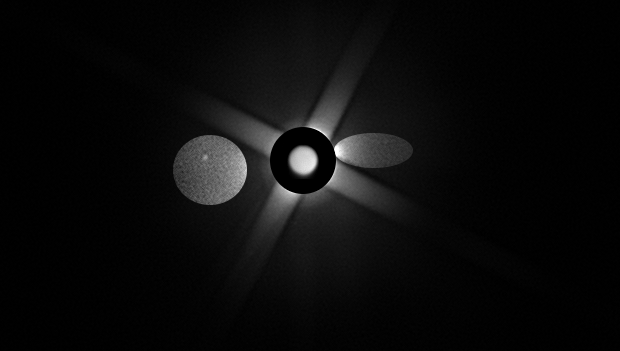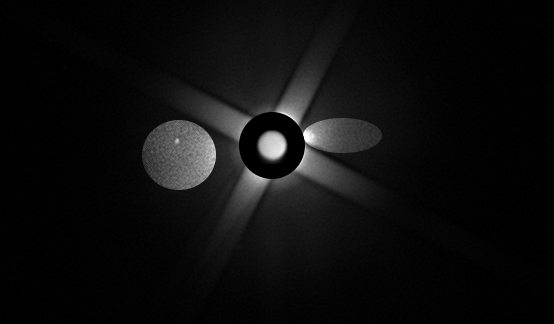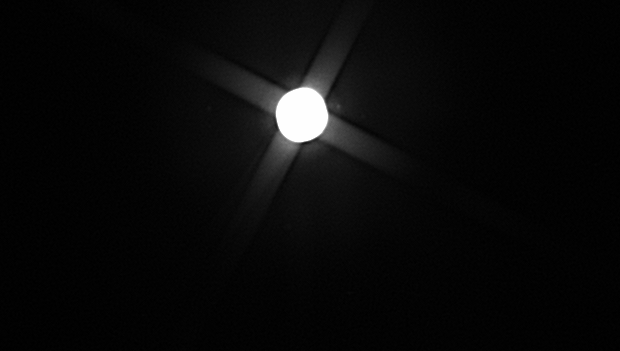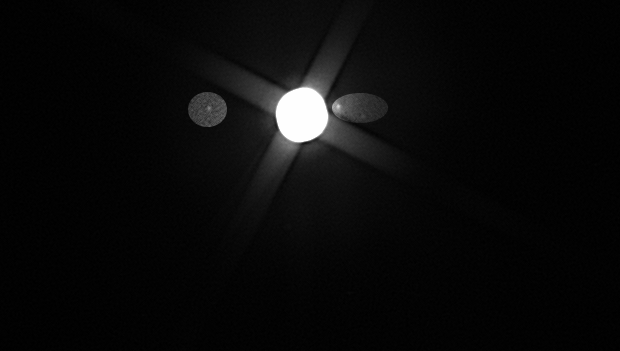Félelem és rettegés néhány képben. A Mars két holdja nehezen megfigyelhető, ezért felfedezésükre is 1877-ig kellett várni. Nevüket görög mitológiai istenekről kapták: Phobosz (félelem) és Deimosz (rettegés). Miközben 2018 nagy Mars közelségére várva mindenki azon tűnődik, hogy elül-e a porvihar a Marson, érdemesnek látszott próbálkozni megfigyelésükkel. Végül 2018. július 17-én hajnalban kb. másfél órára kibukkant a Mars a felhők közül. Akkor készültek az alábbi képek.
Fear and dread in some pictures. The two moons of Mars are difficult to observe, so we had to wait until 1877 for their discovery. Their names were given from Greek mythological gods: Phobos (fear) and Deimos (dread). While waiting for the great opposition of Mars in 2018 and everyone is wondering whether the dust storm at Marson will settle, it seemed worth trying to observe the moons. Finally, on the 17th of 2018, Mars came out of the clouds for an hour and a half. The following pictures were taken then.
Ahhoz, hogy a holdak látható váljanak, a Marsot túl kell exponálni. Ez látható középen. A holdak és néhány halvány csillag fényességükkel lett jelölve. A Phobosz nagyon közel kering a Marshoz. Bár majdnem marstávolban volt, így is csak kis kidudorodásként látszik a túlexponált Mars jobb oldalán. Összehasonlításképpen a jobb oldali kép az adott égterületet mutatja a Guide planetárium program segítségével.
To make moons visible, Mars must be overexposed. This is visible in the middle. The moons and some dim stars are marked with their brightness. Phobos is very close to Mars. Though it was almost in the utmost distance, it seems to be just a small dot on the right side of the overexposed Mars. By comparison, the right-hand image shows the current area of the sky generated by the Guide planetarium program.
Rövidebb expozíciós idővel a Mars mérte kisebb lesz, kevésbé ég be, a Phobos jobban elválik és látható lesz. Cserébe a csillagok és a Deimos is halványabb. Jobb oldalon a holdak körüli rész kiemelésre került a jobb láthatóság érdekében.
With shorter exposure time, Mars will be smaller, less overexposed, Phobos will be better separated and visible. In turn, the stars and the Deimos are fainter. On the right side the moons around the Mars was highlighted for better visibility.

Ez az animáció, ami kb., egy órai mozgást ölel fel, a mozgást a Marshoz képest mutatja be. Látható bal oldalon, ahogy a Deimos rója útját a Mars körül. Jobb oldalon először egy halvány csillag szalad jobbra. Ez az a 12.3 magnitúdós csillag, ami a keresőtérképen is jobbra látszik a Marstól. Ezt égi útján során a Mars elhagyta. Pár képkockával később a Phobos is megjelenik, szintén jobbra mozogva, de a Mars magával hurcolja mozgása közben. Középre a Mars képe került beillesztésre, hogy a méretarányok világosabban látszódjanak. A Marsot ugyan azzal az eszközzel fényképeztem, de jóval rövidebb expozíciós időt használna.
This animation covers approximately one hour of movement, showing the movement relative to the Mars. It can be seen on the left as Deimos hurls his way around Mars. On the right side first, a faint star runs to the right. This is the 12.3 magnitude star, which is visible on the map right of the Mars. Mars left it through his celestial path. With some frames later, Phobos also appears, moving right, but Mars drags him as he moves. In the middle, the Mars image has been inserted to make the scale proportions more clearly visible. I photographed Mars with the same device but used much shorter exposure time.

Végül egy animáció, ami a mozgást az állócsillagokhoz képest mutatja be. A Mars meglehetősen gyorsan vágtat végig a csillagmezőn, két holdját magával vonszolva.
Finally, an animation that shows motion relative to the stars. Mars runs fast along the starfield, dragging its two moons.





